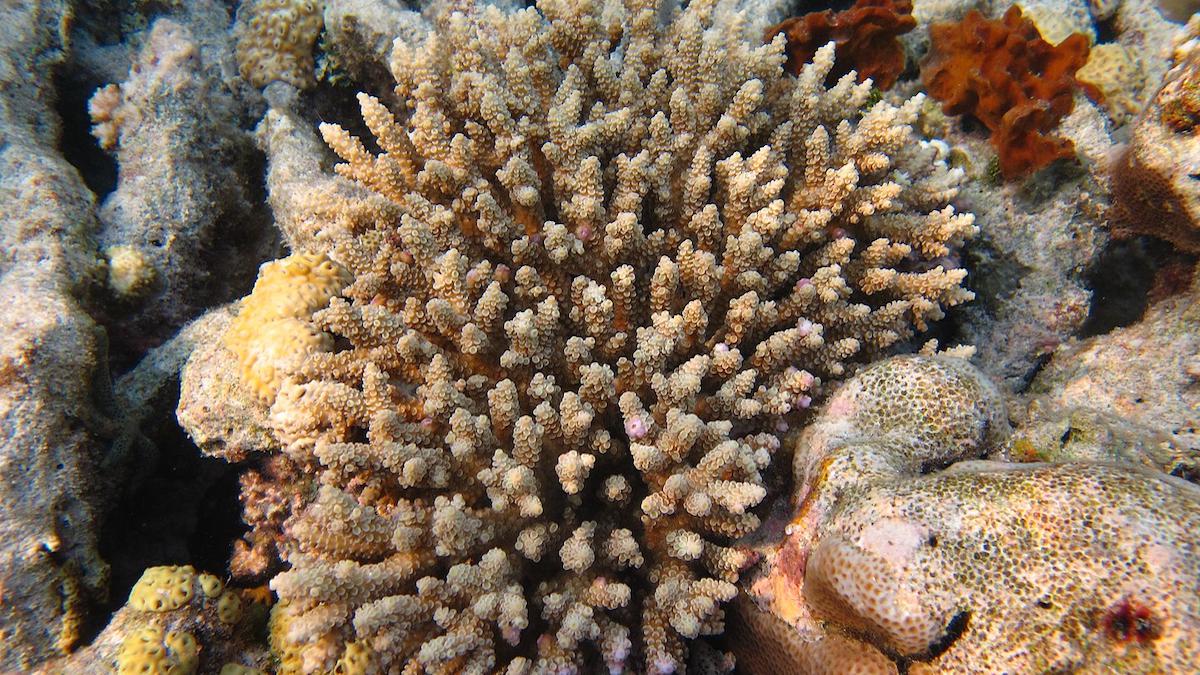
‘Almost a Dream’: Scientists Observe Coral Cells Swallowing Algae for First Time

Researchers cultured cell lines of the coral Acropora tenui (pictured) to observe coral swallowing algae for the first time. MDC Seamarc Maldives / CC BY-SA 4.0
The relationship between coral and algae is hugely important: the coral provides algae with shelter, while the algae provides the coral with energy and color.
However, scientists have never before observed the moment when coral cells envelop single-celled algae to begin this partnership, until now. In a study published in Frontiers in Marine Science Wednesday, researchers describe watching coral swallow algae for the first time.
“It was amazing to see — it was almost a dream!” senior author and professor at the Okinawa Institute of Science and Technology Graduate University Noriyuki Satoh said in a university press release.
The reason this had not been achieved before is that coral cells are very difficult to culture. In the past, researchers had relied on the cells of similar species, like sea anemones. But, in a paper published in Marine Biotechnology in April, the Japanese research team announced they had managed to culture a sustainable cell line Acropora tenuis, a type of stony coral, in the lab.
Stony corals are the most common type of corals found in tropical and subtropical reefs, making them especially relevant to study, the press release explained.
To observe the coral cells’ interaction with the algae, the researchers chose a cell line called IVB5, which has properties similar to the endodermal coral cells that engulf algae in the wild. They then added microscopic algae called dinoflagellates to the petri dish.
Once the algae were added, around 40 percent of the corals formed long, finger-like appendages that reached out to the algae. The corals then “swallowed” the algae within 30 minutes. Within 24 hours, almost half of the coral cells had completely engulfed the algae, according to the study.
“Coral cells that harbored algal cells gradually became round and less mobile, and the algal cells sometimes settled in vacuole-like structures in coral cell cytoplasm,” the study authors wrote. “This symbiosis state was maintained for at least a month.”
The study isn’t only important because it is the first time that the phenomenon has been observed. It also has significant conservation implications.
The relationship between coral and algae is under stress like never before, from factors such as pollution, ocean acidification and warmer waters caused by the climate crisis, UPI explained. In the last two decades, scientists have observed an uptick in coral bleaching events, in which these stressors cause the coral to expel their algae. Stony corals are particularly susceptible to these events.
“For coral reef conservation, it’s vital for us to fully understand the partnership between stony coral and the algae that live inside these animals, at the level of a single cell,” co-first author and Kochi University professor Kaz Kawamura said in the press release.
Next, the researchers hope to encourage the algae and coral to reproduce together in the lab so that they can better study their partnership to combat bleaching.
“This would be very exciting as then we can ask new questions, like how the corals react when placed under stress,” Satoh said in the press release. “This could give us a more complete understanding of how bleaching occurs, and how we can mitigate it.”

 233k
233k  41k
41k  Subscribe
Subscribe 